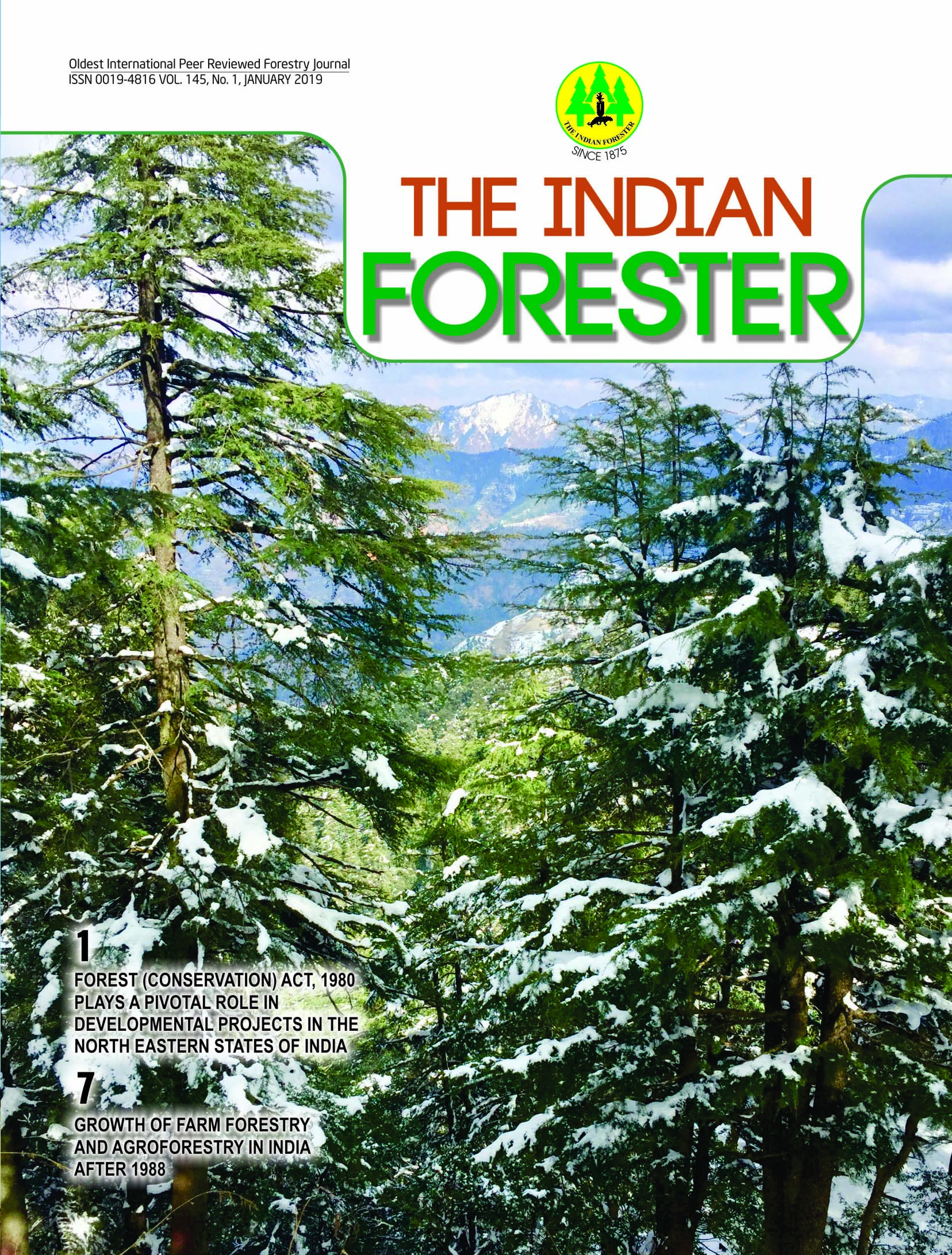Allelopathic Effect of Fresh Leaf Loppings of Multipurpose Trees A
DOI:
https://doi.org/10.36808/if/2019/v145i1/142729Keywords:
Allelopathy, Leaf loppings, Crops, Microbes, Multipurpose TreesAbstract
A pot culture study was undertaken to investigate the allelopathic effect of leaf lopping of trees, when used as organic sources of nutrient, on the growth and yield of cowpea, maize, groundnut and ragi. The allelopathic effect of various tree leaf loppings varied with different crops. Leaf loppings of all trees except casuarina and mango reduced seed yield in cowpea with the greatest reduction caused by cashew, teak, rubber and cocoa. Leaf loppings of all the trees significantly reduced yield of maize with the maximum reduction caused by portia and cocoa. In groundnut, all trees except sapota and mango significantly reduced the yield with the maximum caused by rubber. In ragi, addition of guava leaf loppings reduced yield most. The study brought out the allelopathic compatibility of the various trees on the test crops.References
Akonbundu I.O. (1986). Allelopathic potential of selected legume species. In: IITA Resource and Crop Management Program Annual report, IITA, Ibadan, Nigeria 15-19 pp.
Chouhan G.S., Mathur A.N., Bhandari M.M.C. and Jat P.K. (1992). Allelopathic effect of some tree species on associated grasses under silvipastoral system. In: Proceeding: First National Symposium on Allelopathy in Agroecosystems, Hisar, 2-4 February 1992, Chaudhary Charan Singh Haryana Agricultural University , Hisar, Haryana.
Duke J.A. (1992). Handbook of Phytochemical Constituents of Grass Herbs and Other Economic Plants. Boca Raton, FL: CRC Press.
Heisey R.M. (1990). Evidence of allelopathy by tree of heaven (Ailathus altissima). J. Chemical Ecology, 16: 2037-56 Inderjit (2005). Soil microorganisms: an important determinant of allelopathic activity. Plant and Soil, 274: 227236.
John J., Leela N.K., Sreekumar K.M., Anesh R.Y. and Hema H. (2007). Phytotoxicity of leaf extracts of multipurpose trees against insect pest in bitter gourd (Momordica charantia) and brinjal (Solanum melongena). Allelopathy Journal, 20(2): 411418.
KAU (2011). Kerala Agricultural University. Package of th Practices Recommendations: Crops (14 Ed.). Kerala Agricultural University, Thrissur 360 pp.
Ngulub M. and Chirwa W.P. (1988). Gmelina harmful to some food crops. Zambia Malawi Newsletter, 65:12.
Sahoo U.K., Upadhyay K. and Meitei C.B. (2007). Allelopathic effects of Leucaena leucocephala and Tectona grandis germination and growth of maize. Allelopathy Journal, 20 (1): 135-144.
Suresh K.K. and Rai R.V.S. (1987) Studies on allelopathic effects of some agroforestry tree crops, The International Tree Crops Journal, 4:109-115.
Swaminathan C., Rai R.S.V. and Suresh K.K. (1989). Allelopathic potentialities of Acacia nilotica (L) wills ex Del. J. Tropical Forest Science, 2: 56-60.
Todaria N.P., Bupendra S. and Dhanai C.S. (2005). Allelopathic effects of tree extract, on germination and seedling growth of field crop. Allelopathy Journal, 15:285-295.
Tripathi S., Tripathi A. and Banerjee S.K. (1996). Comparative study of chemical nature and role of leaf and root extracts on crop productivity. Advances in Forestry Research in India, 14:183-194.
Downloads
Downloads
Published
How to Cite
Issue
Section
License
Unless otherwise stated, copyright or similar rights in all materials presented on the site, including graphical images, are owned by Indian Forester.





